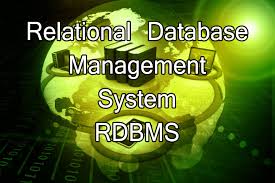RDBMS

A relational database management system (RDBMS or just RDB) is a common type of database whose data is stored in tables.
You’ll find that most databases used in businesses these days are relational databases, as opposed to a flat file or hierarchical database.
Relational databases have the clout to handle multitudes of data and complex queries, whereas a flat file takes up more space and memory, and is less efficient.
So modern databases use multiple tables as standard. The data is stored in lots and lots of tables, or ‘relations’. These tables are divided into rows (records) and columns (fields).
Much like the relationships between data in an entity's relationship diagram, the tables in the relational database can be linked in several ways:
In general, databases store sets of data that can be queried for use in other applications. A database management system supports the development, administration and use of database platforms.
An RDBMS is a type of DBMS with a row-based table structure that connects related data elements and includes functions that maintain the security, accuracy, integrity and consistency of the data.
Functions of relational database management systems
Elements of the relational database management system that overarch the basic relational database are so intrinsic to operations that it is hard to dissociate the two in practice.
The most basic RDBMS functions are related to create, read, update and delete operations, collectively known as CRUD. They form the foundation of a well-organized system that promotes consistent treatment of data.
- Characteristics of one table record may be linked to a record in another table
- A table record could be linked to many records in another table
- Many table records may be related to many records in another table.
